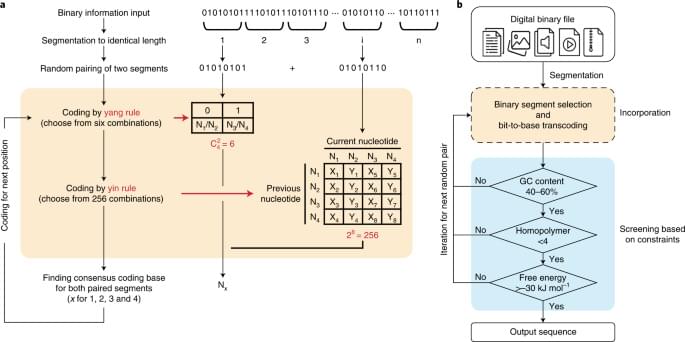Get the latest international news and world events from around the world.

A Problem That Could Plague Rapid Transport Like Bullet Trains & Hyperloop
If you look at Amtrak’s route map, you’ll notice that the service isn’t really geared toward serving rural areas and smaller cities. Sure, they do stop at some smaller cities along existing rail routes, but those aren’t the point as much as a place to get fuel and let people get onto connecting services. On top of that issue, Amtrak largely uses the same tracks as freight trains, and the freight lines have been placed according to freight needs and not the needs of potential passengers. In one particularly weird case, it completely skips the Phoenix metro area, with the nearest station in Maricopa.
But I’m getting off topic a bit with that last one. The main point to gather from the map is that it’s designed mostly to connect larger cities with other large cities. Going from New York to Los Angeles isn’t a big deal. Going from El Paso to Albuquerque, well, even Amtrak tells you on the map that you’re getting on a Greyhound. Public transit really isn’t a priority in the United States, though. So maybe this isn’t a fair comparison. Let’s look at some maps in other countries for a minute:

Towards practical and robust DNA-based data archiving using the yin–yang codec system
The yin-yang codec transcoding algorithm is proposed to improve the practicality and robustness of DNA data storage.
Given these results, YYC offers the opportunity to generate DNA sequences that are highly amenable to both the ‘writing’ (synthesis) and ‘reading’ (sequencing) processes while maintaining a relatively high information density. This is crucially important for improving the practicality and robustness of DNA data storage. The DNA Fountain and YYC algorithms are the only two known coding schemes that combine transcoding rules and screening into a single process to ensure that the generated DNA sequences meet the biochemical constraints. The comparison hereinafter thus focuses on the YYC and DNA Fountain algorithms because of the similarity in their coding strategies.
The robustness of data storage in DNA is primarily affected by errors introduced during ‘writing’ and ‘reading’. There are two main types of errors: random and systematic errors. Random errors are often introduced by synthesis or sequencing errors in a few DNA molecules and can be redressed by mutual correction using an increased sequencing depth. System atic errors refer to mutations observed in all DNA molecules, including insertions, deletions and substitutions, which are introduced during synthesis and PCR amplification (referred to as common errors), or the loss of partial DNA molecules. In contrast to substitutions (single-nucleotide variations, SNVs), insertions and deletions (indels) change the length of the DNA sequence encoding the data and thus introduce challenges regarding the decoding process. In general, it is difficult to correct systematic errors, and thus they will lead to the loss of stored binary information to varying degrees.
To test the robustness baseline of the YYC against systematic errors, we randomly introduced the three most commonly seen errors into the DNA sequences at a average rate ranging from 0.01% to 1% and analysed the corresponding data recovery rate in comparison with the most well-recognized coding scheme (DNA Fountain) without introducing an error correction mechanism. The results show that, in the presence of either indels (Fig. 2a) or SNVs (Fig. 2b), YYC exhibits better data recovery performance in comparison with DNA Fountain, with the data recovery rate remaining fairly steady at a level above 98%. This difference between the DNA Fountain and other algorithms, including YYC, occurs because uncorrectable errors can affect the retrieval of other data packets through error propagation when using the DNA Fountain algorithm.


Two-inch diamond wafers could store a billion Blu-Ray’s worth of data
Researchers in Japan have developed a new method for making 5-cm (2-in) wafers of diamond that could be used for quantum memory. The ultra-high purity of the diamond allows it to store a staggering amount of data – the equivalent of one billion Blu-Ray discs.
Diamond is one of the most promising materials for practical quantum computing systems, including memory. A particular defect in the crystal, known as a nitrogen-vacancy center, can be used to store data in the form of superconducting quantum bits (qubits), but too much nitrogen in the diamond disrupts its quantum storage capabilities.
That meant there was a trade-off to make – scientists had to create either large diamond wafers with too much nitrogen, or ultra-pure diamond wafers that are too small to be of much use for data storage. But now, researchers at Saga University and Adamant Namiki Precision Jewelery Co. in Japan have developed a new method for manufacturing ultra-high purity diamond wafers that are big enough for practical use.

NRL Conducts Successful Terrestrial Microwave Power Beaming Demonstration
A microwave dish transmitter is pointed toward a rectifying antenna in part of the Safe and Continuous Power Beaming – Microwave (SCOPE-M) demonstration at Army Blossom Point Research Field, Maryland, Sept. 21, 2021. U.S. Naval Research Laboratory developed the rectifying antenna, “rectenna”, to convert an x-band microwave beam to 1 kilowatts of DC power at a range of 1 kilometer.
Photo Information


New Brain Learning Mechanism Calls for Revision of Long-Held Neuroscience Hypothesis
Experimental observations conclude learning is mainly performed by neural … See more.
Summary: Experimental observations conclude learning is mainly performed by neural dendrite trees as opposed to modifying solely through the strength of the synapses, as previously believed.
Source: Bar-Ilan University
The brain is a complex network containing billions of neurons. Each of these neurons communicates simultaneously with thousands of others via their synapses (links), and collects incoming signals through several extremely long, branched “arms,” called dendritic trees.
For the last 70 years a core hypothesis of neuroscience has been that brain learning occurs by modifying the strength of the synapses, following the relative firing activity of their connecting neurons.
From seawater to drinking water, with the push of a button
MIT researchers have developed a portable desalination unit, weighing less than 10 kilograms, that can remove particles and salts to generate drinking water.
The suitcase-sized device, which requires less power to operate than a cell phone charger, can also be driven by a small, portable solar panel, which can be purchased online for around $50. It automatically generates drinking water that exceeds World Health Organization quality standards. The technology is packaged into a user-friendly device that runs with the push of one button.
Unlike other portable desalination units that require water to pass through filters, this device utilizes electrical power to remove particles from drinking water. Eliminating the need for replacement filters greatly reduces the long-term maintenance requirements.